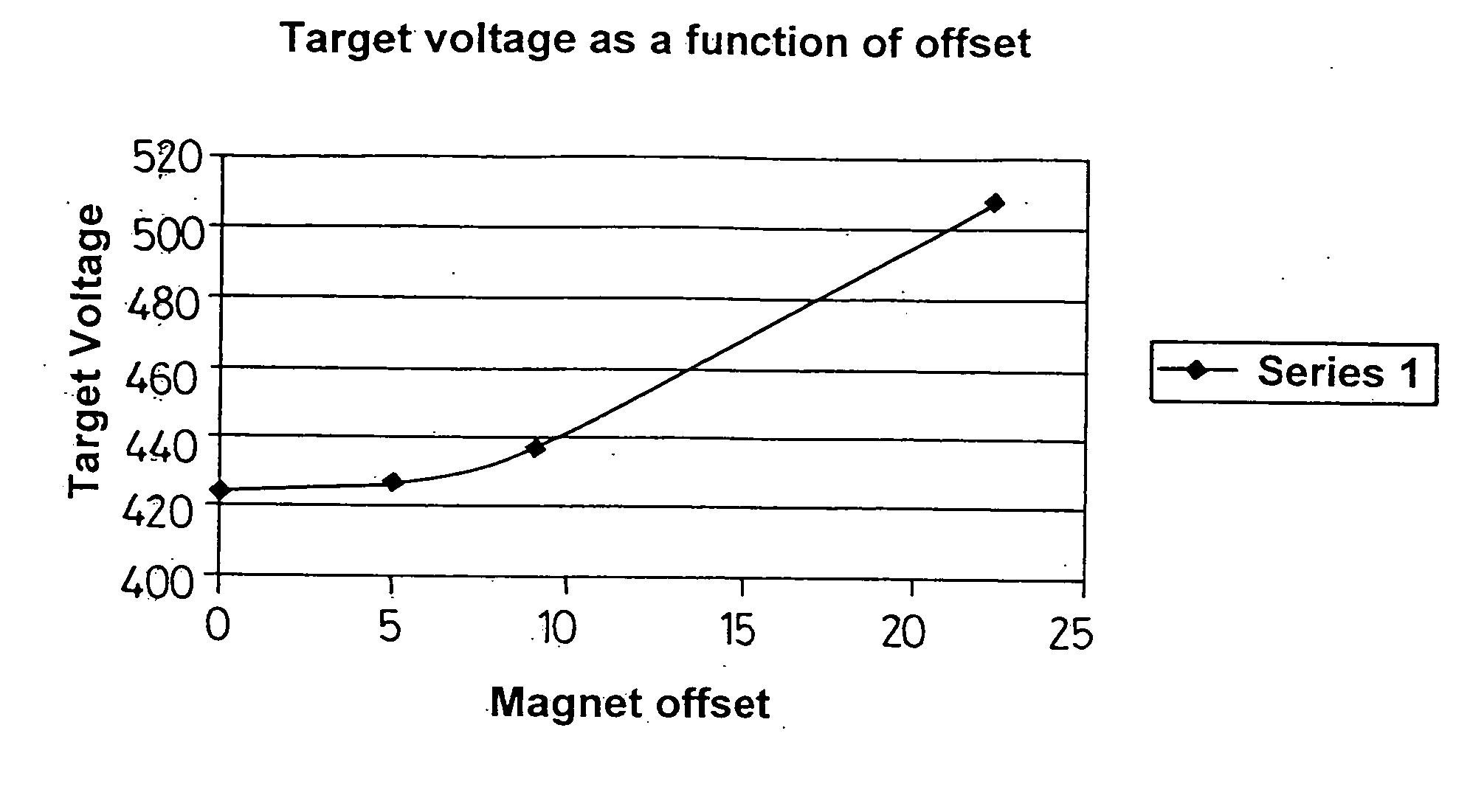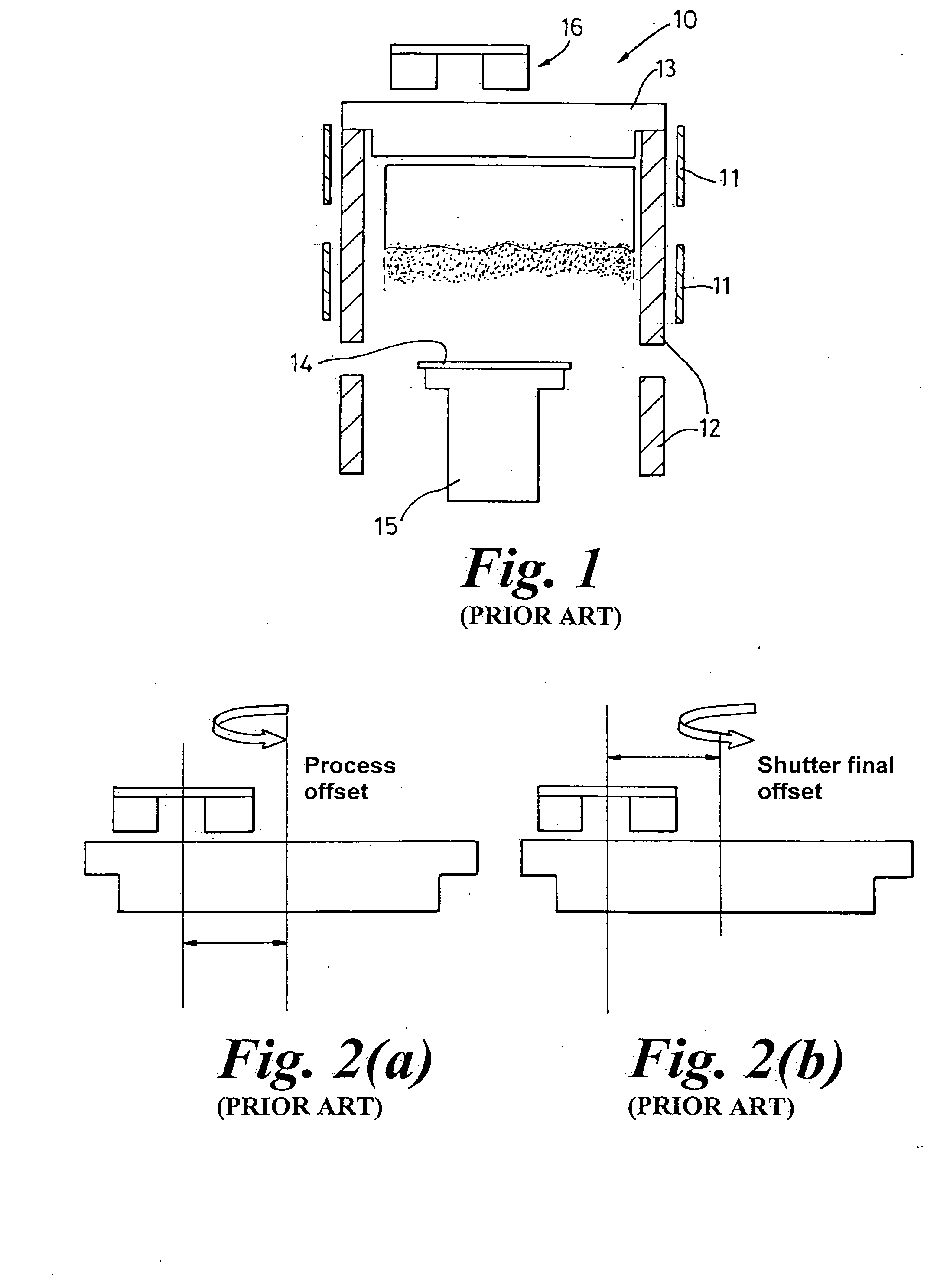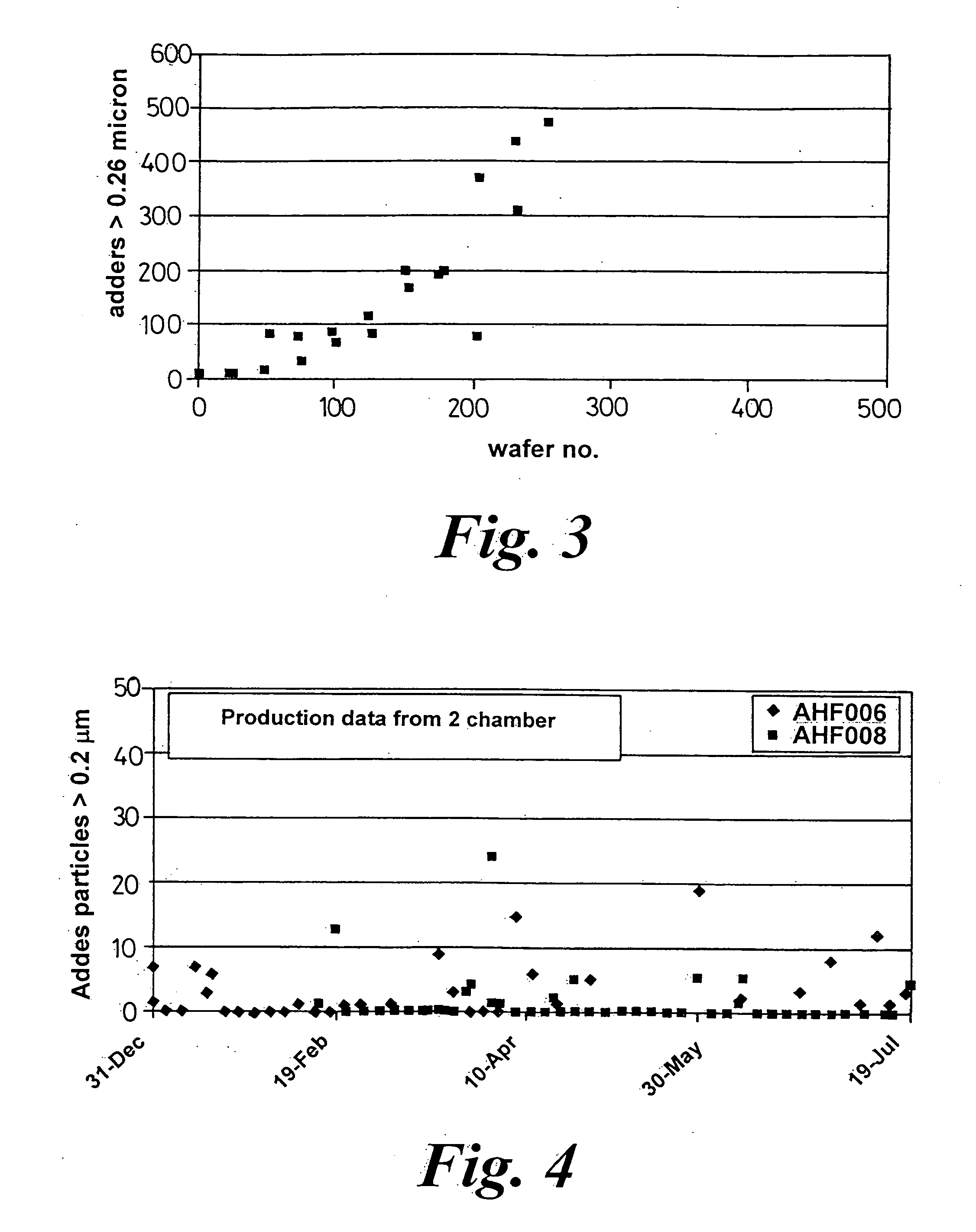Film deposition
- Summary
- Abstract
- Description
- Claims
- Application Information
AI Technical Summary
Benefits of technology
Problems solved by technology
Method used
Image
Examples
Embodiment Construction
[0026] Thus in the standard Trikon Advanced Hi-Fill® AHF chamber, illustrated in FIG. 1 and generally indicated at 10, DC coils 11 extend down the chamber sidewalls 12 to allow the plasma to extend and fill a large volume of the chamber 10. This in turn increases the probability of the material leaving the target 13 becoming ionised before it reaches a wafer 14 located on a support 15. In order for this system to work correctly it is necessary to minimize any electron loss to the anode ring (not shown) and chamber walls 12. This can be achieved if the magnetron arrangement 16 is positioned so that the target material does not erode from the very edge of the target 13.
[0027] However, if one uses such a target 13 arrangement for reactive sputtering, because there is not full face erosion, the target 13 can become a particle source. As has been mentioned earlier the adhesion of the different material created in reactive sputtering can readily delaminate from the edge of the target and...
PUM
 Login to View More
Login to View More Abstract
Description
Claims
Application Information
 Login to View More
Login to View More - R&D
- Intellectual Property
- Life Sciences
- Materials
- Tech Scout
- Unparalleled Data Quality
- Higher Quality Content
- 60% Fewer Hallucinations
Browse by: Latest US Patents, China's latest patents, Technical Efficacy Thesaurus, Application Domain, Technology Topic, Popular Technical Reports.
© 2025 PatSnap. All rights reserved.Legal|Privacy policy|Modern Slavery Act Transparency Statement|Sitemap|About US| Contact US: help@patsnap.com



